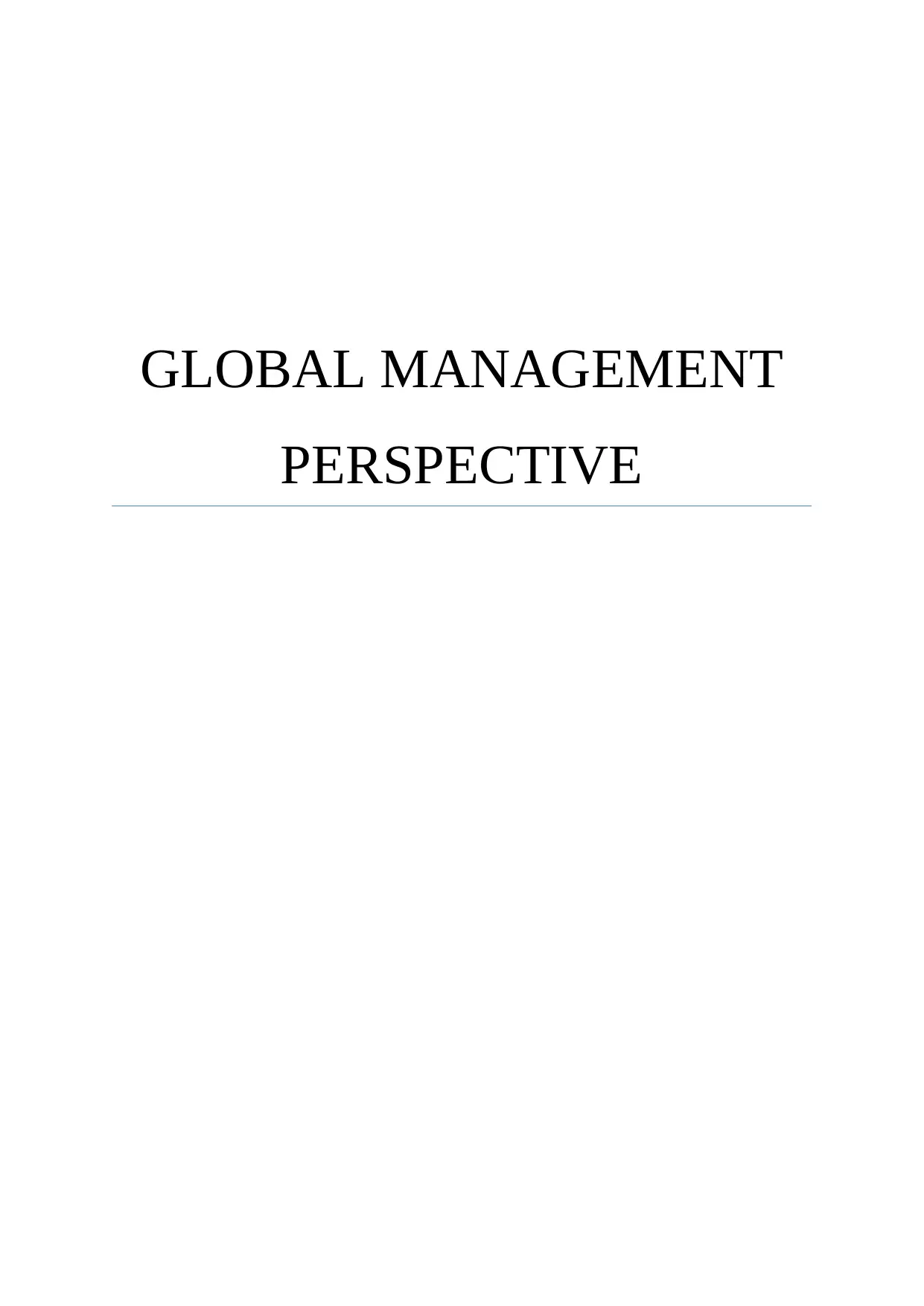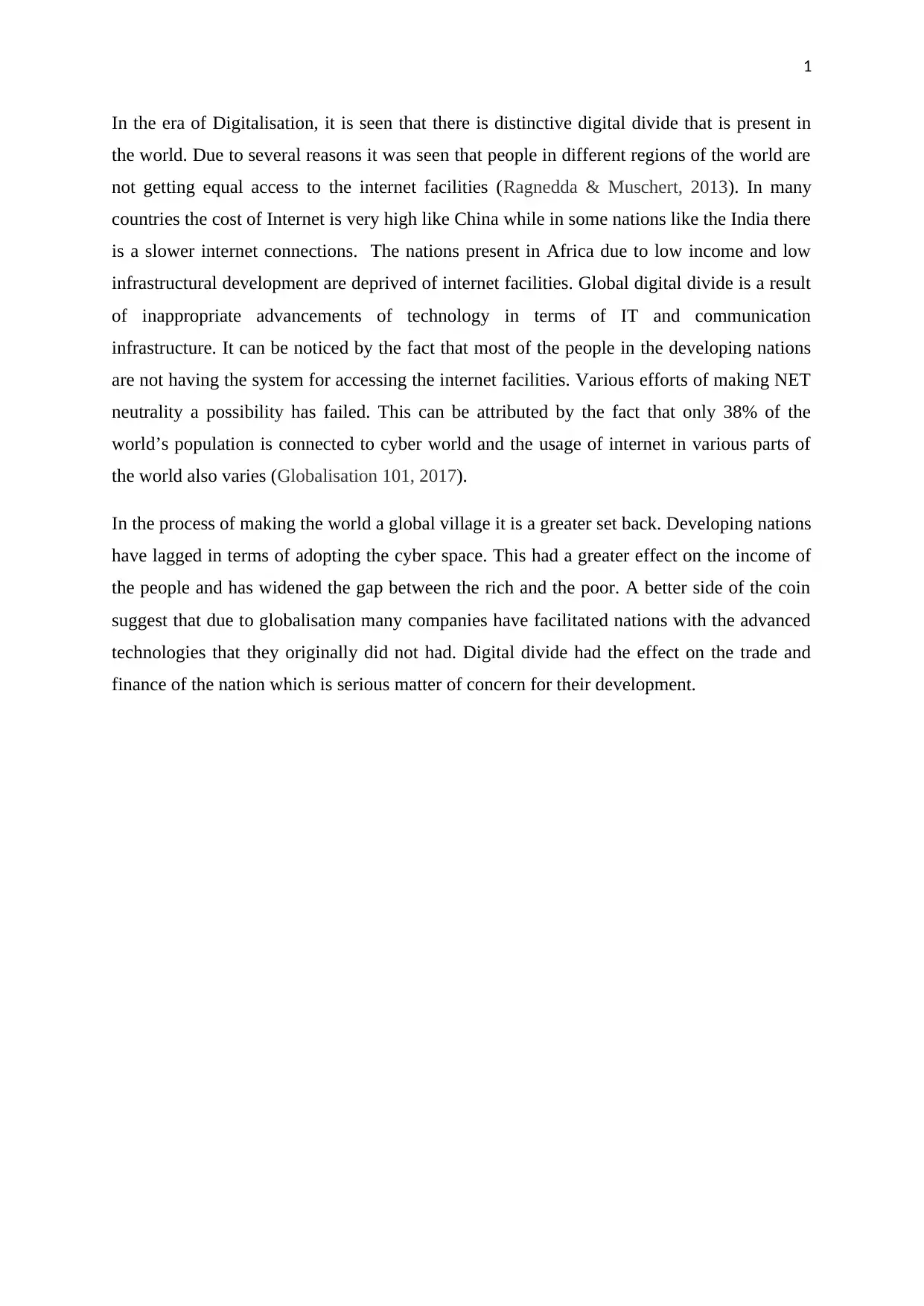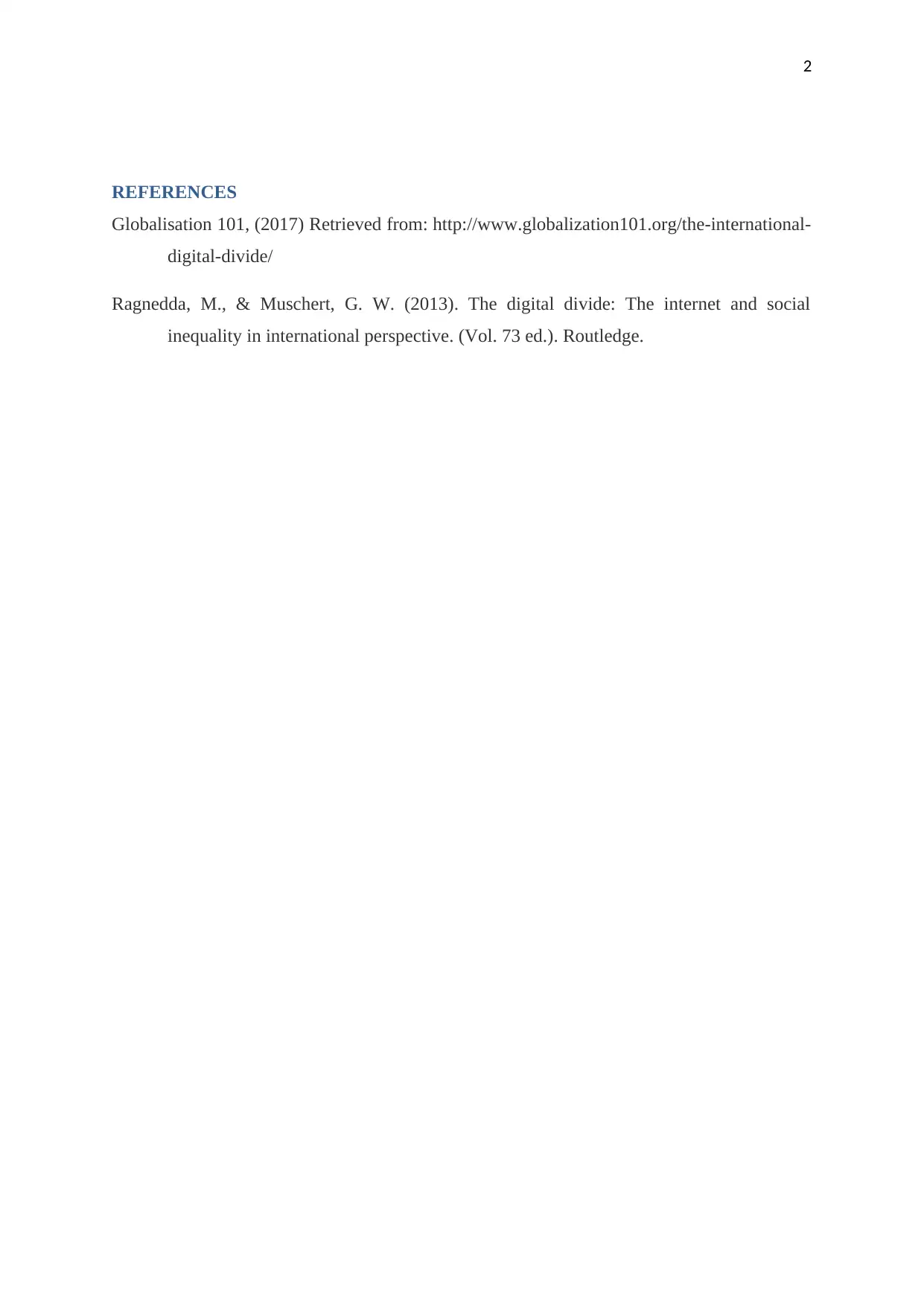Digital Divide: Global Management Perspective - Analysis Report
VerifiedAdded on 2020/05/28
|3
|352
|66
Report
AI Summary
This report examines the digital divide from a global management perspective, highlighting the disparities in internet access across different regions. It discusses how unequal access to the internet, due to factors like high costs and inadequate infrastructure, affects developing nations and widens the gap between the rich and the poor. The report notes that only a portion of the world's population is connected to the cyber world, and explores the impact of this divide on trade, finance, and the overall development of nations. The report references the role of globalization, which has brought advanced technologies to some nations, but also emphasizes the need to address the digital divide to ensure equitable access to information and opportunities worldwide. This analysis is crucial for understanding the challenges and implications of digital inequality in a globalized world, emphasizing the need for strategies to bridge this gap.
1 out of 3










![[object Object]](/_next/static/media/star-bottom.7253800d.svg)